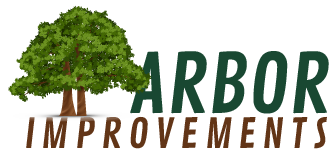A tree can be a lifelong investment for your home and property. A tree increases curbside appeal, provides shade and so much more. Trees are a major investment. However, if you find yourself trying to decide on whether or not your need to have a tree removed, that is never an easy choice. Sometimes a tree removal becomes essential. There are a number of scenarios where tree removal becomes necessary. Today, Arbor Improvements will share what to consider when removing a tree so you know you are making the right choice.
Determine Health of Tree
The health of a tree is the most obvious and important factor to consider. A tree that is 50% or more damaged is generally not likely to survive and should be removed. Sick or diseased trees should also be removed. Diseases will spread to other plants and trees. To stop the spread you will want to have the tree removed rather quickly. Some of the signs of a sick tree can include:
• Dead Branches: Dead branches or limbs can fall off the tree at any time, posing a risk to safety. Look for branches that have little to no leaves, especially when other parts of the tree are leafy.
• Decay or Rot: Look for signs of decay such as fungal growth, hollowed or decayed areas, or peeling bark. Fungi can come in many forms from mushrooms to a white or black powder in the surface of the tree.
• Disease: Signs of disease can vary widely but may include unusual leaf color or size, a sudden decrease in the amount of leaves, or visible pests.
Structure of Tree; is it Leaning?
A tree that is leaning or has an odd shape might be structurally unsound. Trees that lean more than 15% from the vertical are generally considered to be very hazardous. Additionally, trees with V-shaped or U-shaped multiple trunks are more prone to splitting, making them again a potential safety hazard. If you decide you want to keep a V or U shaped tree, it is very important to keep these trees trimmed and prevent an overgrowth in the tree’s canopy.
Does Tree have a Healthy Root System?
The heart and health of a tree is the roots system and is vital for the tree’s survival. But, it’s also one of the hardest things to judge since roots are underground. However, visible roots that are damaged or decaying, or a tree that’s starting to lean, can be signs of serious root problems. Super soggy soil around the tree causes root rot. Prolonged exposure to soggy soil may have caused the root to rot.
Location of Tree
Sometimes a tree needs to be removed simply because of where it’s located. If a tree is too close to your house or another structure, its roots can cause foundation problems. Trees that are too close to power lines can also be a hazard. You never want the branches of tree to be in contact with the roof either, as the branches can cause major roof damage and roof access to many pests. If the tree’s location causes more problems than good, you will need to have the tree removed. If you’re planning a construction project and a tree is in the way, it might be necessary to remove it. However, it’s worth consulting with an arborist or a construction professional to see if there’s a way to preserve the tree first. In some cases you may even be able to transplant the tree to another location.
Tree Trimming, Removal & More in Greenville, Greer, Mauldin, Simpsonville, Union and Spartanburg, SC
If you have a tree that needs to be removed, make sure to seek out professional tree removal services and contact Arbor Improvements today.


